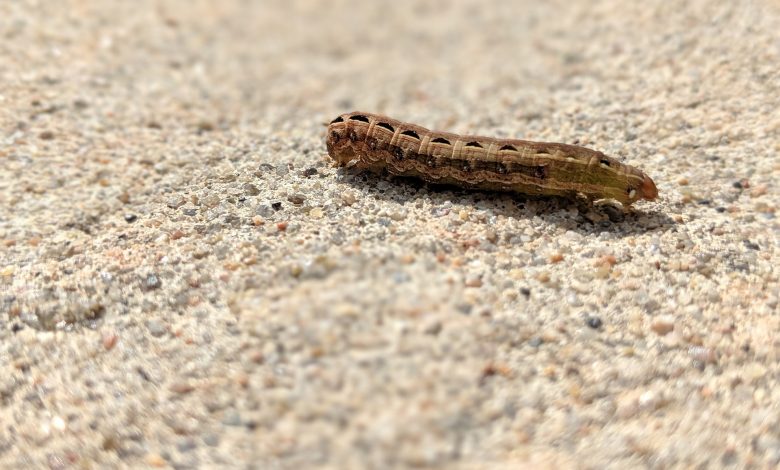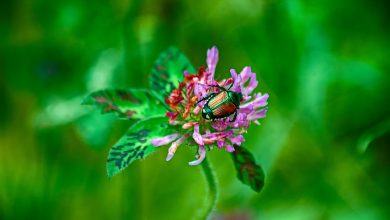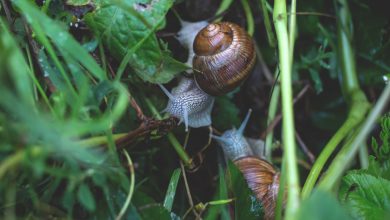How to Prevent and Get Rid of Cutworms

Although their name suggests it, cutworms aren’t actually worms at all. In fact, they’re caterpillars who have yet to mature into their final moth stage. These garden pests are very difficult to find, and gardeners might not realize they have a problem until it’s far too late.
Cutworms are nocturnal; they hide away in your garden during the day, and they won’t become active until the evening and through the night. Their name comes from the idea that they cut down on plants, usually stem-first, and can be very destructive.
If you’ve noticed that your plants have been chewed down, there’s a good chance you’re dealing with a cutworm issue. You won’t be the first gardener, and you won’t be the last. Luckily, a garden can bounce back from a cutworm issue, so long as you understand the cutworm and how to defend against it.
To help you prevent and get rid of cutworms, the following information will be helpful to repair and protect your garden oasis.
What is a Cutworm?
Most of the species referred to as cutworms are included in the Noctuidae family of moths. They are well known for wreaking havoc on agricultural lands, as well as garden spaces.
The cutworm’s only focus is to continually eat as much as possible. They will munch on whatever they can get to first, whether it be the plant’s stem, leaves, or buds. If they are able, they can take down entire plants in a short time span.
In some cases, the cutworm species’ can be subterranean, and these creatures will also eat the roots of plants. The two most recognized breeds are the black cutworm and the variegated cutworm. Naturally, the black cutworm is usually black or grey in color, and the variegated cutworm is a brown color with white stripes.
The variegated cutworm is known for causing serious damage, capable of wiping out gardens and fields in less than a week’s time if not stopped.
What Does a Cutworm Look Like?
As mentioned, the cutworm is the larval version of an adult moth. They are soft-bodied caterpillars that come in a variety of colors including brown, grey, green, or yellow. They can reach up to one inch in length and are sometimes seen with longitudinal stripes as well.
Not all cutworms are made the same. Depending on the region you’re living in, the biology of the cutworm can be different, and the means to control them will vary as well.
Even though most cutworms are recognized as plant-eaters along the earth, some of these species will actually work their way up to the top of plants. They can commonly leave behind signs similar to that of a slug, which requires different control solutions.
Be sure you have a cutworm issue on your hands before you begin to take action.

The Cutworm Life Cycle
Most species of the cutworm will overwinter deep in the soil of your garden in their larval state. When the temperatures begin to get warmer, the larvae slowly become active, feeding on the weak roots and stems of your plants during the nighttime.
The larvae will continue to do this, all the while molting several times before they will reach their fully-grown moth form. Within a week’s time, the moth will emerge from the soil and quickly begin laying its own eggs.
These eggs are usually laid on the stems and leaves of plants, and they will do this anywhere from one to five times in a year.
Ideal Circumstances
If you want some heads up about the potential for cutworm infestations, you can turn to the weather for some warning. If you are experiencing a hot, dry August at the end of the summer, you’ll know that moths are going to be very active.
At this time, the female moths will be feeding on flowers and preparing to lay eggs. If the moth has gathered an acceptable amount of nutrition from the flowers she eats, there is a better chance that she will produce and lay more eggs.
These warm, dry conditions also promote dry soil, which is the most preferred soil status for a moth looking to lay her eggs. Additionally, warm and dry spring weather will encourage the attack of cutworms.
If you are experiencing these temperatures at the end of spring and beginning of summer, you might choose to increase your cutworm inspections and prevention tactics. Keeping your soil moist during these times might also help to deter moths from laying eggs in your space.
Of course, keeping your yard clean is also imperative, since cutworms love to overwinter in debris, piles of logs, and leftover weeds. Do not halt your garden work just because your flowers are dying; these are the most important times for pest prevention.
Where Can You Find Cutworms?
It’s relatively easy to recognize a cutworm problem when plants are tiny. Seedlings will appear to be cut off at ground level, usually lying in the soil on their side.
Additionally, the soil around them will be dug up and disturbed, up to five centimeters deep.
If you think that you’ve got an issue with cutworms, then you’ll have to turn to your soil to get a clearer picture. The cutworms will remain in the first few inches of soil during the day, so you can turn up a few inches of dirt to see what comes up.
Similarly, you might do an inspection later in the evening when the worms are most active. Let it become as dark as possible, then go out with a flashlight to see what kind of damage you’re dealing with.
Alternatively, cutworms might also come out during the day if the weather is clouded over.
Cutworms are also known to be found on golf courses since they have a distinct taste for variations in turfgrass. They work to cut the blades of grass off at the crown; however, they do not cause nearly as much damage as armyworms in these locations.
Preventing Cutworms
Even if you haven’t seen any signs of cutworms in your yard, there’s a good chance there are a few kicking around beneath the earth. To prevent any issues from arising, consider some of the following tactics.
Introduce Fireflies
Fireflies are beautiful to have floating through your garden and lighting up the night, but that glowing is also a symbol of defense against cutworms.
Fireflies are a main predator of cutworms, and they will happily snack on any exposed cutworms who are eating at night. This approach will require you to attract fireflies to your garden space with a few tactics:
- Planting low-lying trees and shrubs will offer the ideal hiding place for fireflies during the day. Plant a few of these to attract them to a safe space.
- Long, ornamental grasses are ideal for fireflies; they will sit on the tips of these grasses and scan the area for a mate. Of course, be sure to keep these grasses well-groomed, so as not to attract female cutworms looking to lay eggs.
- Birdbaths aren’t just for birds, and fireflies will happily come to lap up some water if the bath is located near some bushes of grasses.
- Mosquito repellent is a deterrent for fireflies, so it’s ideal to avoid using it too much.
Keep Your Garden Clear
A yard that has not been cleared and cultivated will be a huge attraction for cutworm moths, as well as other pests. Adult moths like to lay their eggs in dry soil and tall grasses, so it’s important to do your due diligence at the end of the season.
This means getting rid of yard debris, cutting the grass, and tilling the soil. You’ll be able to deter the moths from laying eggs, as well as get rid of any cutworms that were getting ready to overwinter in the soil.
If you have any log or leaf piles, get rid of these as well. Cutworms can overwinter in these spots, and in the springtime, other creatures like wasps will be on the lookout for new homes too.
Encourage Birds
Naturally, birds are a huge predator of cutworms. With this in mind, you’ll want to keep your garden busy with birds all throughout the year.
In the spring and summer, they will prey on the active cutworms, and turning up the soil in the winter will allow them to feed on exposed worms that are overwintering.
We suggest implementing all of the aspects that birds love, including appropriate bird feeders and food, shelter, and birdbaths. Enticing the birds to remain busy in your hard will deter some moths from coming into the area again.
Cut Grass Carefully
If you can, be very precise when you are mowing the lawn. Oftentimes it’s hard to get right up against a garden bed; however, this leftover uncut grass is the perfect place for cutworms.
Not only will they be protected, but they can also find shelter in the tall flowers and plants nearby. Make as close a cut as possible, and mow frequently to deter egg-laying.
Getting Rid of Cutworms

Winter Checks
Cutworms are capable of overwintering, both in the soil and in any piles of debris that have been left behind. They’ll usually be in their larval or pupal stage at this point, so they’ll be slow-moving.
If you live in a colder climate, the coming winter will be a great opportunity to rid your garden space of cutworms. You can dig up the soil about two inches deep and expose the cutworms who are overwintering below.
You can either place these cutworms in a bowl of warm water and soap, or you can leave them exposed to the elements. In freezing temperatures, they will not be able to make it back to their hideout in time.
Additionally, turning up your soil in the winter exposes the cutworms to hungry creatures, especially birds. Birds of all kinds will be happy to swoop down and eat up your collection of cutworms as you stir up the yard.
Starvation
Another way to get rid of cutworms before the springtime is to starve the larvae of the foods they need to survive. Keep the garden as weed-free as you can, and refrain from adding any manure or compost to your soil.
These are the main sources of food for cutworms, and without them, they will have fewer pickings to choose from. Use other fertilizers as a replacement, and you’ll likely take away the key food course the cutworms need to last the rest of the cold season.
Aside from starving the larvae, cutting back on their favorite foods will also discourage female moths from laying their eggs in the winter. They will leave in search of better pastures for their larvae.
If you have been successful at starving the cutworms, you can then move forward with a type of bait that will kill off the remaining cutworms. This bait will be a combination of a bran mash, which you can combine with a safe, suitable poison.
Cutworms will be too hungry to resist the bait, and the last of the infestation will be killed. Of course, make sure the bait is small enough and laid out thinly enough that other creatures aren’t interested in taking it.
Plant Protection
Cutworms will come up and out of the soil at nighttime and immediately feed on the first part of the plant they taste. As a result, this is almost always the stem of the plant or seedlings.
To discourage cutworms from feeding, you can create handmade barriers that will protect the plant from becoming lunch. You can use cardboard or aluminum pieces to create a thick circle around the plant. Leave a small space in the middle for the stem to fit into.
This can discourage cutworms from feeding off the plant, and it can take them a while to get to other areas to eat if all the plants have these protective barriers.
Alternatively, you can also plant seedlings inside toilet paper tubes cut in half. Fill the tube with soil, keep them upright, and start your seedlings indoors. When they’re ready to be planted, you can plant the toilet paper tube as well to discourage cutworms from ruining your hard work.
Removal by Hand
Not every gardener is up for this, but removing the cutworms by hand is one of the most clear-cut ways to know that you’re getting rid of the pests for good. It can definitely require some work on your hands and knees, but it is satisfying to know the pests aren’t managing to elude your other prevention efforts.
In this approach, you’ll want to go outside once it has become dark and take a flashlight with you. Check the base of your plants, and stir up the soil as well. Wear gloves when removing the cutworms, and place them in a bowl of warm, soapy water to end them for good.
Diatomaceous Earth
Diatomaceous earth is another popular way to get rid of cutworms if you’ve got an infestation problem. This natural powder is made up of ground-up fossils, which are very sharp for small pests.
The powder is sprinkled across the topsoil, where bugs and caterpillars are traveling. The fossil pieces will cut up the bugs and kill them almost instantly. The powder is safe for humans and wildlife.
Tip: Many people suggest using eggshells or coffee grounds on the top layer of soil to discourage cutworms. While this can work, you’ll want to keep in mind that these extra layers added to the soil will force microorganisms in the soil to work twice as hard in order to break them down. Instead of putting their energy towards your plants, the microorganism will be putting valuable nutrients into cutting down the eggshells or coffee grounds. However, if your infestation is bad, it might be worth it.
Plant Sunflowers
Cutworms love the taste of sunflowers, so why would you plant them? The reason is bait. These little pests won’t be able to resist the stems of sunflowers, so plant a handful between the soil and your garden and let them go to town.
Each night, you can head out to your sunflowers and dig through the soil. There’s a good chance you’ll have attracted a large number of your cutworms to the area, and you can remove the pests from the stem and roots by hand.
Managing Cutworms in Vegetable Crops
If you have a vegetable garden that is showing signs of an invasion, it’s important to get on the issue right away. If you have a cutworm infestation, it won’t take long for them to wipe out your vegetable crops.
Signs of the cutworm are obvious on food; they will eat through the sides of celery and leave gaping holes in your tomatoes. Some species do prefer the actual fruit of the plant over the stem or leaves, which is not ideal if you’re trying to grow food for consumption.
If you’ve noticed that you have cutworm tracks, you can only find success with an insecticide if the larvae are still very small. If they are longer than 2.5 centimeters in length, the chances of the insecticide being successful are low.
If there seems to be just a small, designated area that has been attacked, you can use some spot treatments to discourage expansion.
Cutworms have all kinds of predators, including parasites. If you want these organisms to help with your cutworm numbers in a vegetable crop, be sure to avoid the use of pesticides and provide ideal refuge to help you cut back on numbers.
Know your Field
If you’ve got a large area that you’re planning to grow vegetables in, it is important that you are educated about the space. Some fields will show you signs of what’s to come, and this may tell you to choose another location for your crops.
For example, a gardening space that is currently hosting a lot of weeds might be a tell-tale sign that cutworms are at work. Keep an eye out specifically for tall grasses and chickweed, as these plants attract cutworms in droves.
Once you’ve established your vegetable garden, it’s also a good idea to rotate the crops whenever possible. Cutworms will begin to learn where the best locations are for specific foods if you use the same spot every single year.
Changing up your system planting might take a bit of extra work, but it will be well worth it if it deters cutworms.
Field Maintenance
You can also apply some of the same tactics to your vegetables as you do to your regular garden plants. If you’ve got seedlings that are ready to be planted, consider incorporating the toilet tube approach or cardboard circles around the stems.
Alternatively, head out into your vegetable crops at nighttime, and take a close look at the soil around your stems. Removing any cutworms by hand will ensure that your vegetables are able to grow large and healthy.
Getting Rid of Cutworms
Cutworms have the potential to devastate crops, but if you’re only growing a small garden, you should be able to take control of these pests as soon as you’re aware of their arrival.
Unfortunately, while plants can usually bounce back from other pests like aphids and mealybugs, a plant that’s been taken down by a cutworm usually won’t survive. This is why prevention is so important for your garden or crops.
In some cases, you won’t know you have cutworms until they are sprouting from your soil in the spring. If you’ve been diligent about turning up your soil, you’ll know you have an infestation. Even if you haven’t seen signs, turn your soil often regardless, to keep the area uncomfortable for them.
No one wants to go into their garden one day to see their hard-earned seedlings broken and demolished. Consider the preventative measures we’ve suggested, and be sure to keep your eye out for signs of other pests as well. Prevention is key to a healthy, thriving garden.


